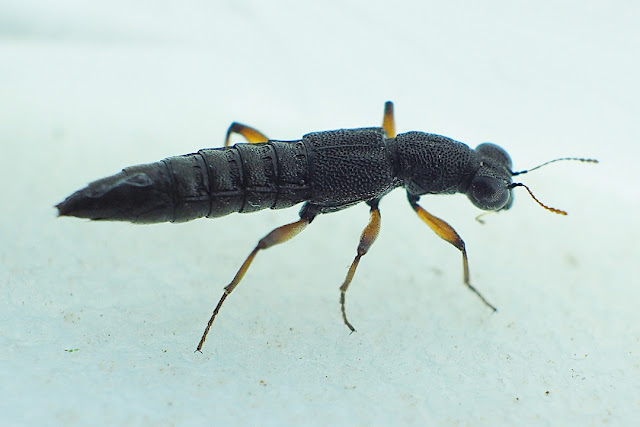A lovely calm and sunny day on Thursday so I got the bike out and had a good tour around the patch. Main targets were Slavonian Grebe and Red-breasted Merganser but as so often happens in birding the target species were elusive. However, many ducks showed well and I had a good sort through various flocks of Tufted, Teal and Wigeon hoping for the usual suspects. I didn't find those, but a pair of Gadwall were welcome. Pied Wags can be quite tricky to see here in winter, but one was on the filter beds of the waterworks at Howaback, good start. However, the attentions of a Hen Harrier and then a Grey Heron meant that the regular Moorhens (this is a green list and I'd seen them but when using the car) were hiding. I ended up at the south-easterly extremity of the patch sorting through a large flock of Wigeon to no avail, however, there were five Redshank in amongst the Curlew and Lapwings. Then scanning further out on Loch of Harray there were three unexpected Red-throated Divers and finally a distant drake Red-breasted Merganser.
 |
| Goldeneyes. |
The calm evening made a visit to the harrier and crow roost a plan. I used the car for this trip as I had other jobs enroute. The roost is difficult as looking west into moorland isn't ideal for seeing harriers coming to roost. I managed three Hen Harriers, including an adult male, there were two Shorties, and the usual Water Rail was heard. Rather good was a calling Red Grouse, not an easy bird to get. During this roost watch crows were heading south at regular intervals and I eventually sussed out where they were gathering. At the end of last year the crows were very elusive and hard to see because of the topography, however, on this occasion they sat out nicely. 256 was a really good count, unfortunately the light wasn't good enough to pick out Carrions or hybrids so all were counted as presumed Hoodies.
Friday was another calm day so another go for Moorhen and Slav Grebe was called for. On this occasion the Moorhens were undisturbed and a single Slavonian Grebe showed distantly off the waterworks.
A mooch about for some insects on Friday produced a couple of beasts under a favourite stone in the birdcrop field.
 |
| The tiny (1.9mm) Chrysomelid, a flea beetle, Longitarsus luridus, the dark form. |
I've been collecting samples for some tardigrade research in Poland. I've never seen a tardigrade, it should be possible with my microscope but I need to find out how to extract them from the mosses and lichens they tend to live in. In one of my lichen samples there were plenty of heteroptera, more identification challenges coming up.


















































